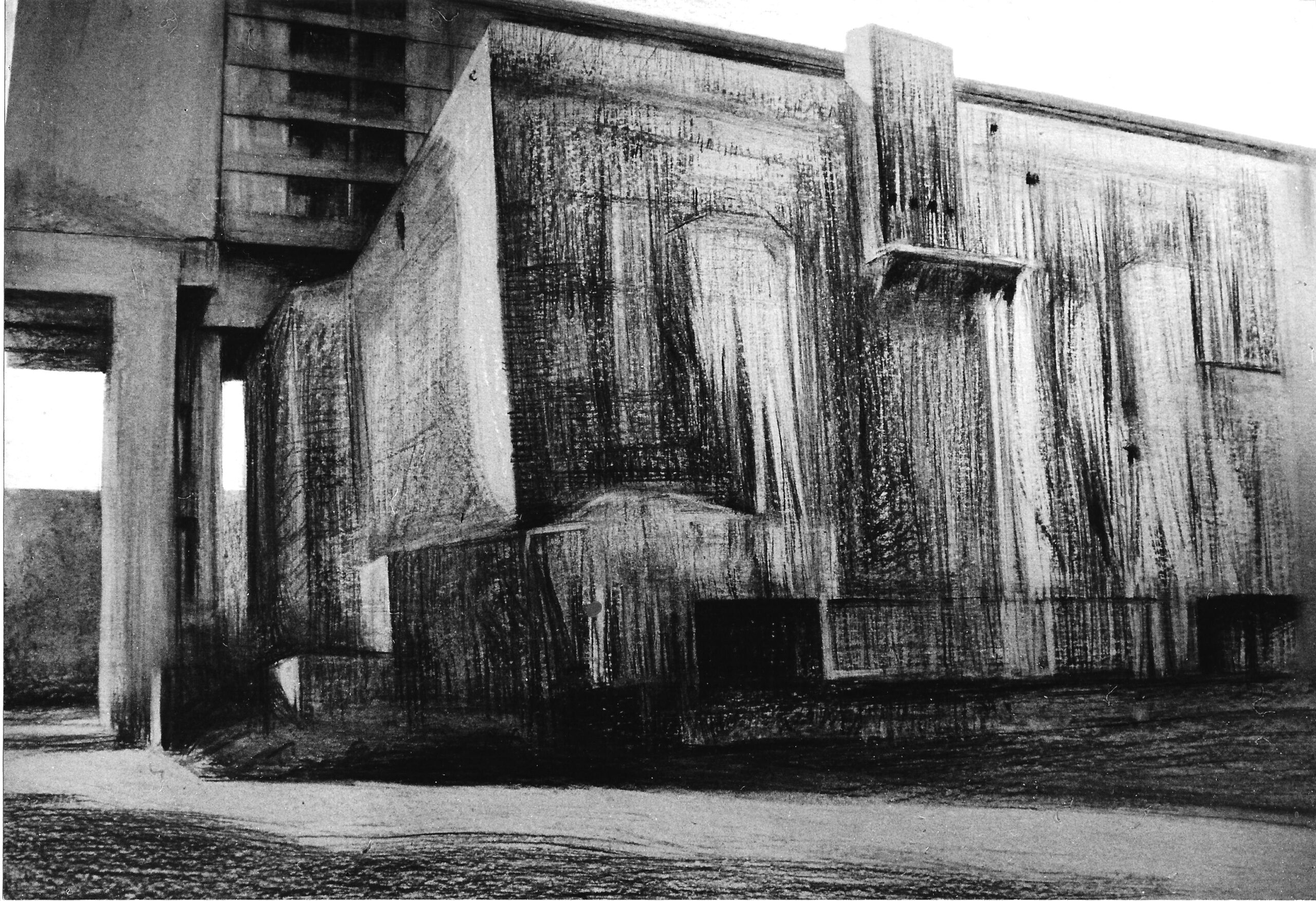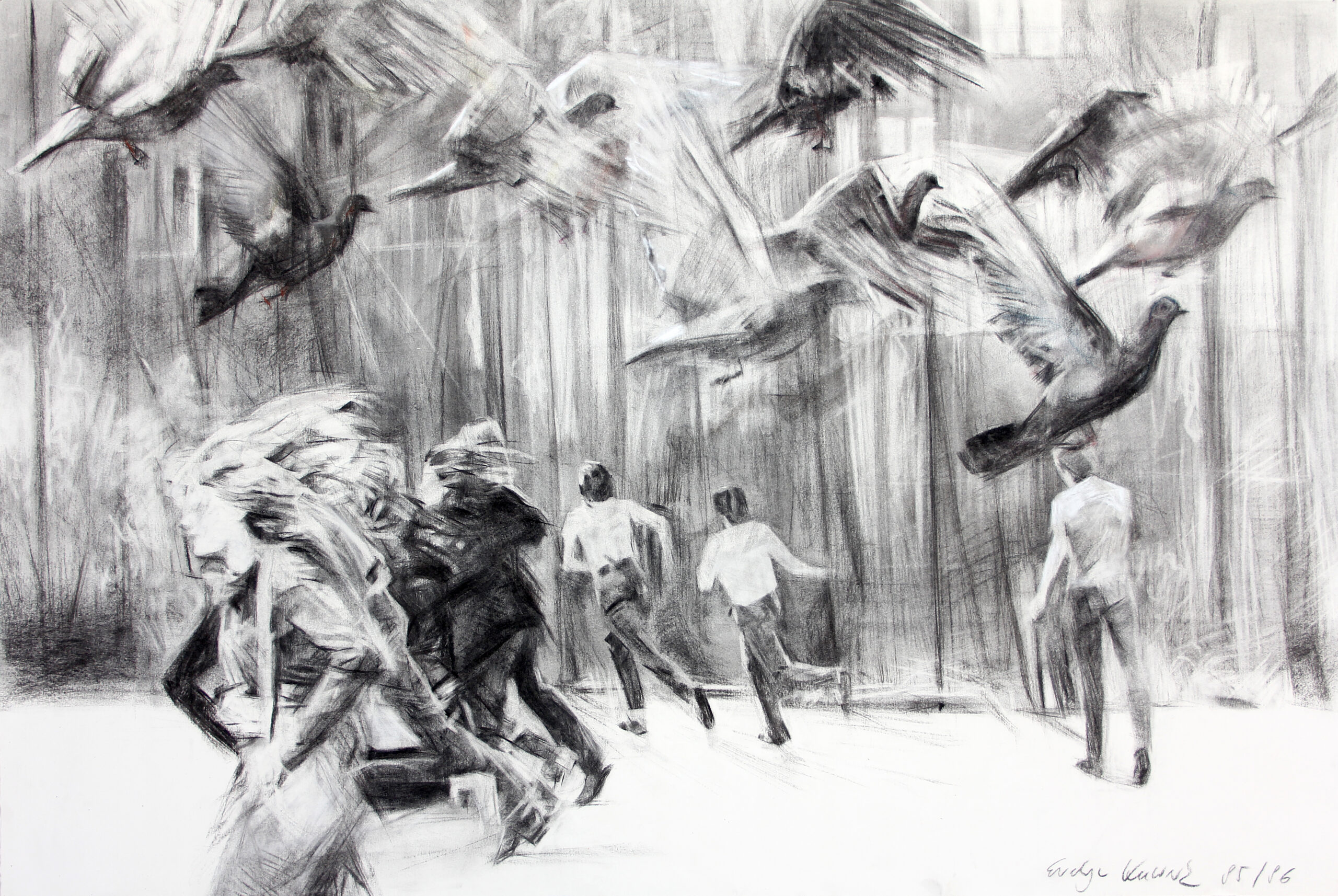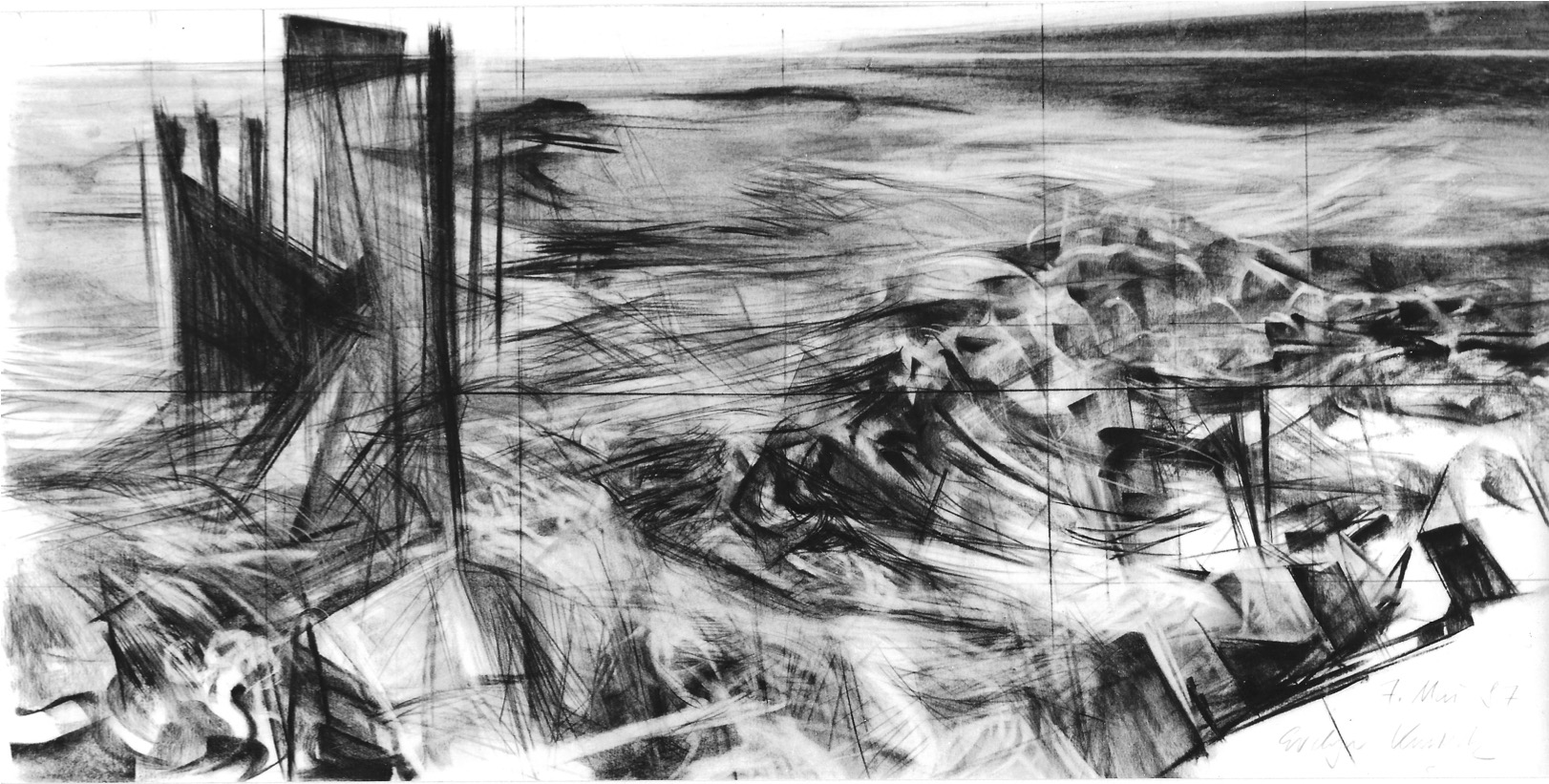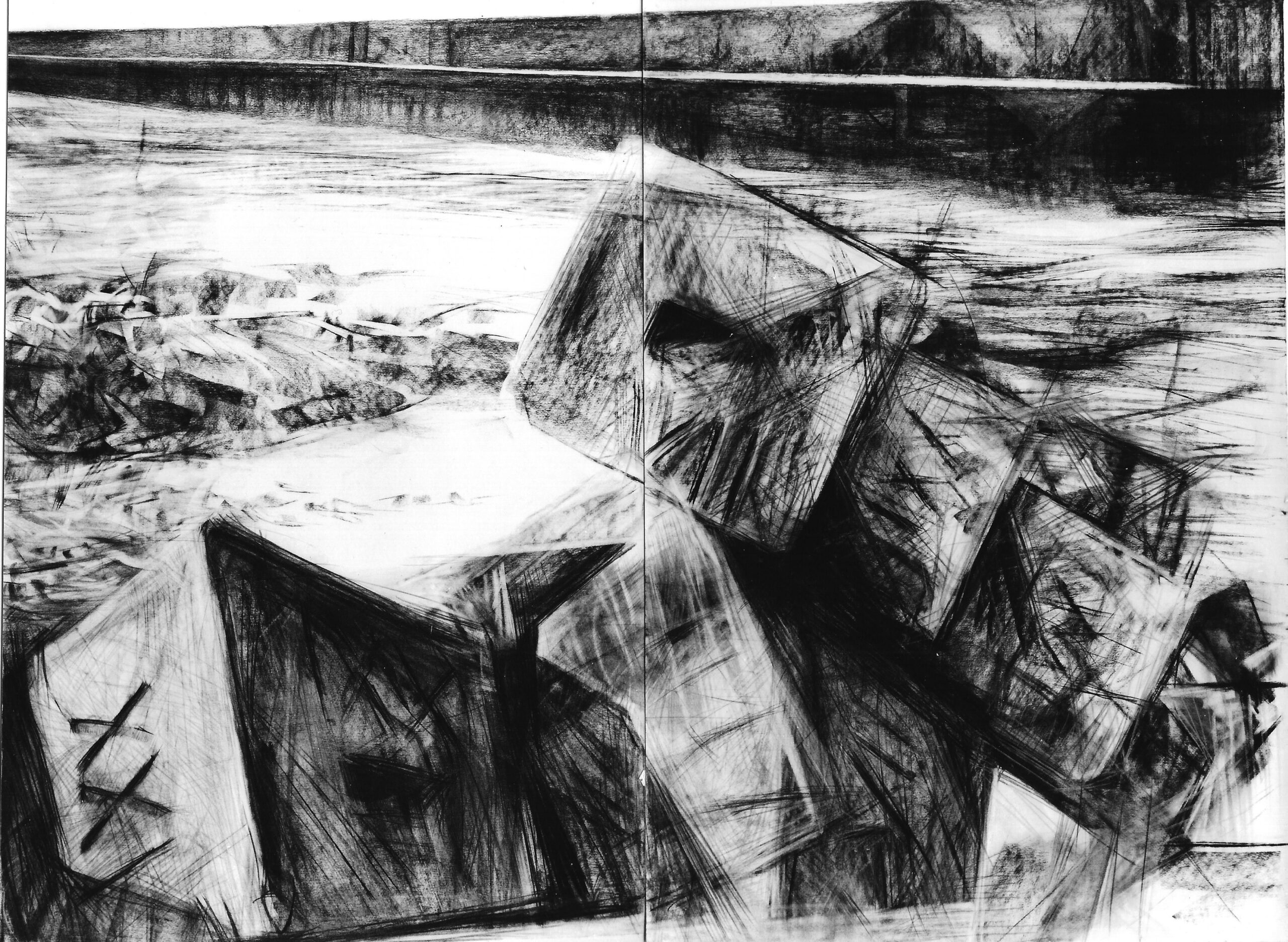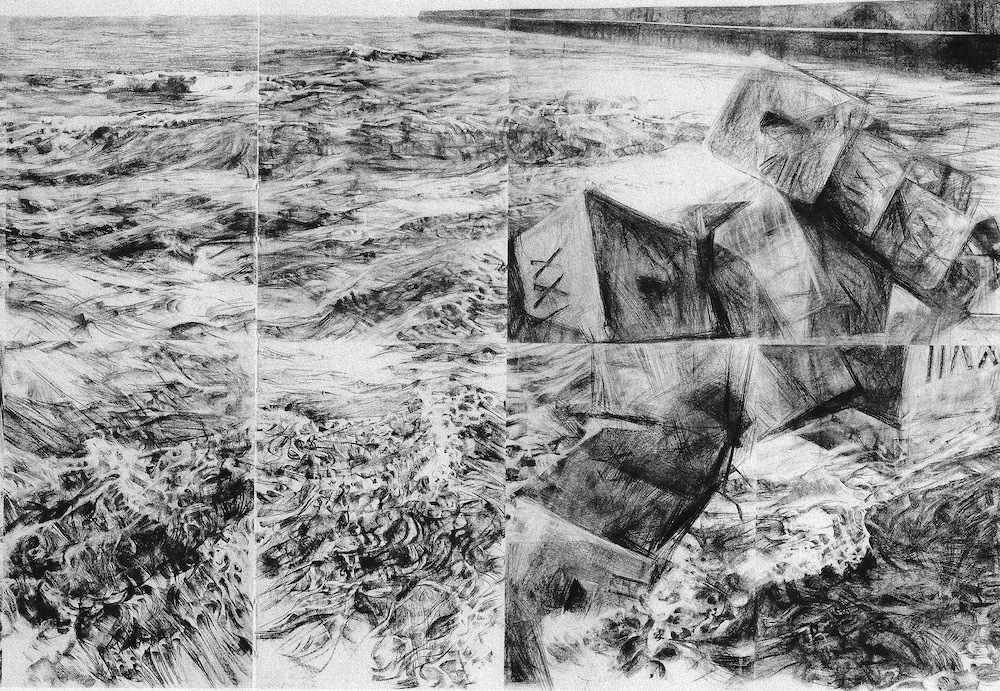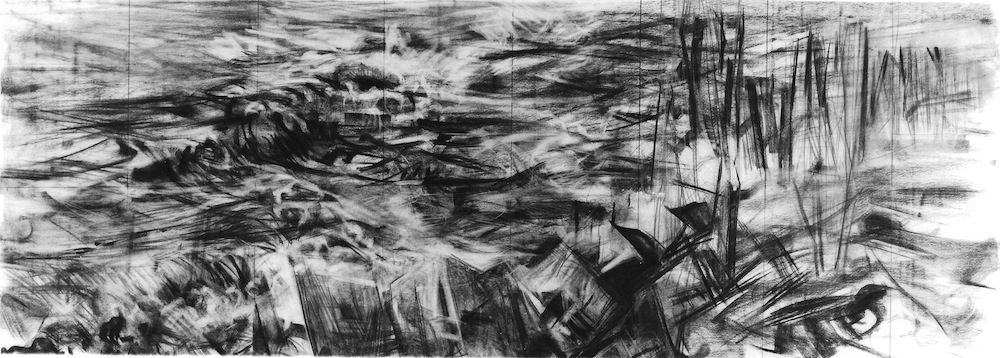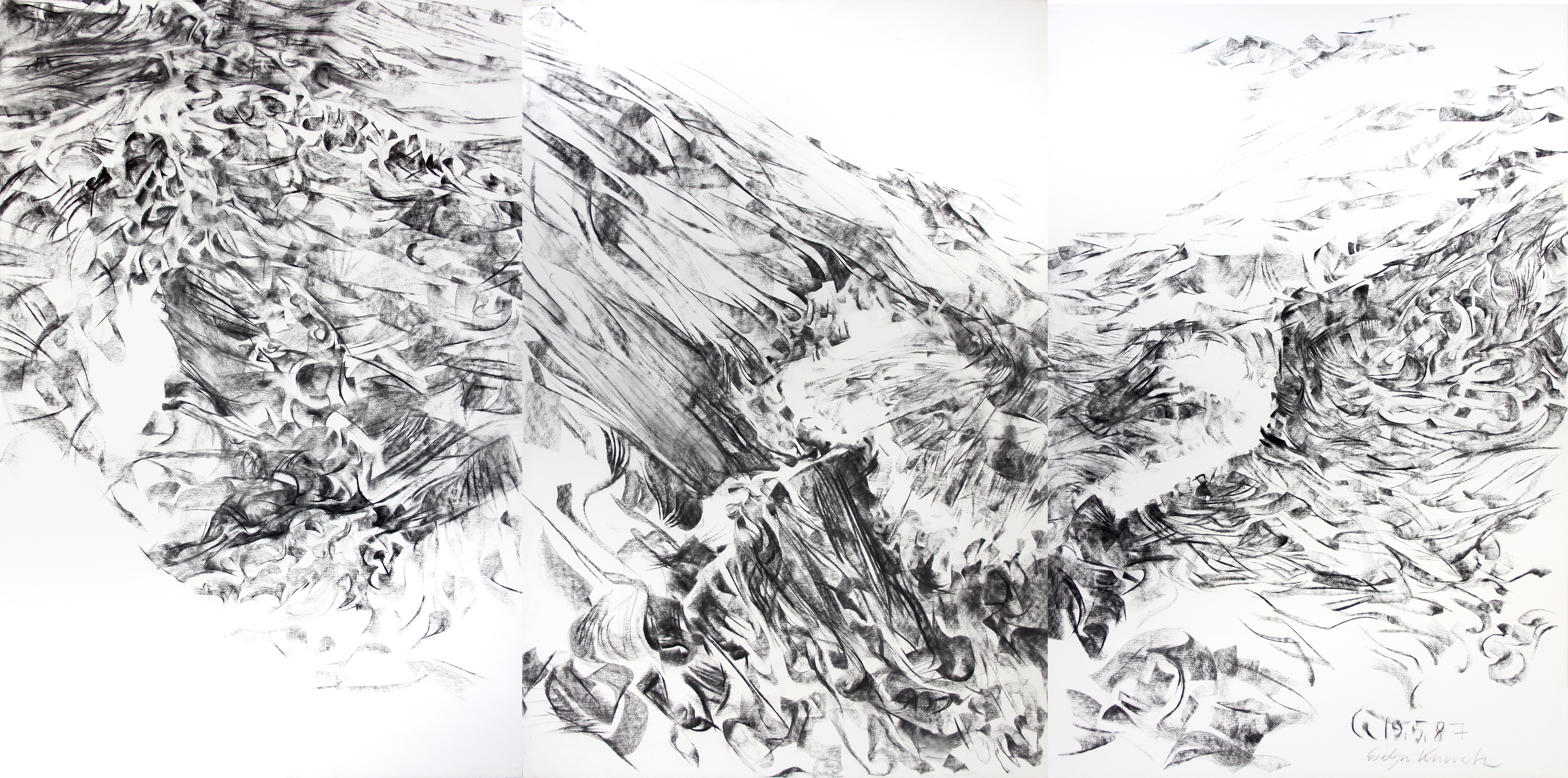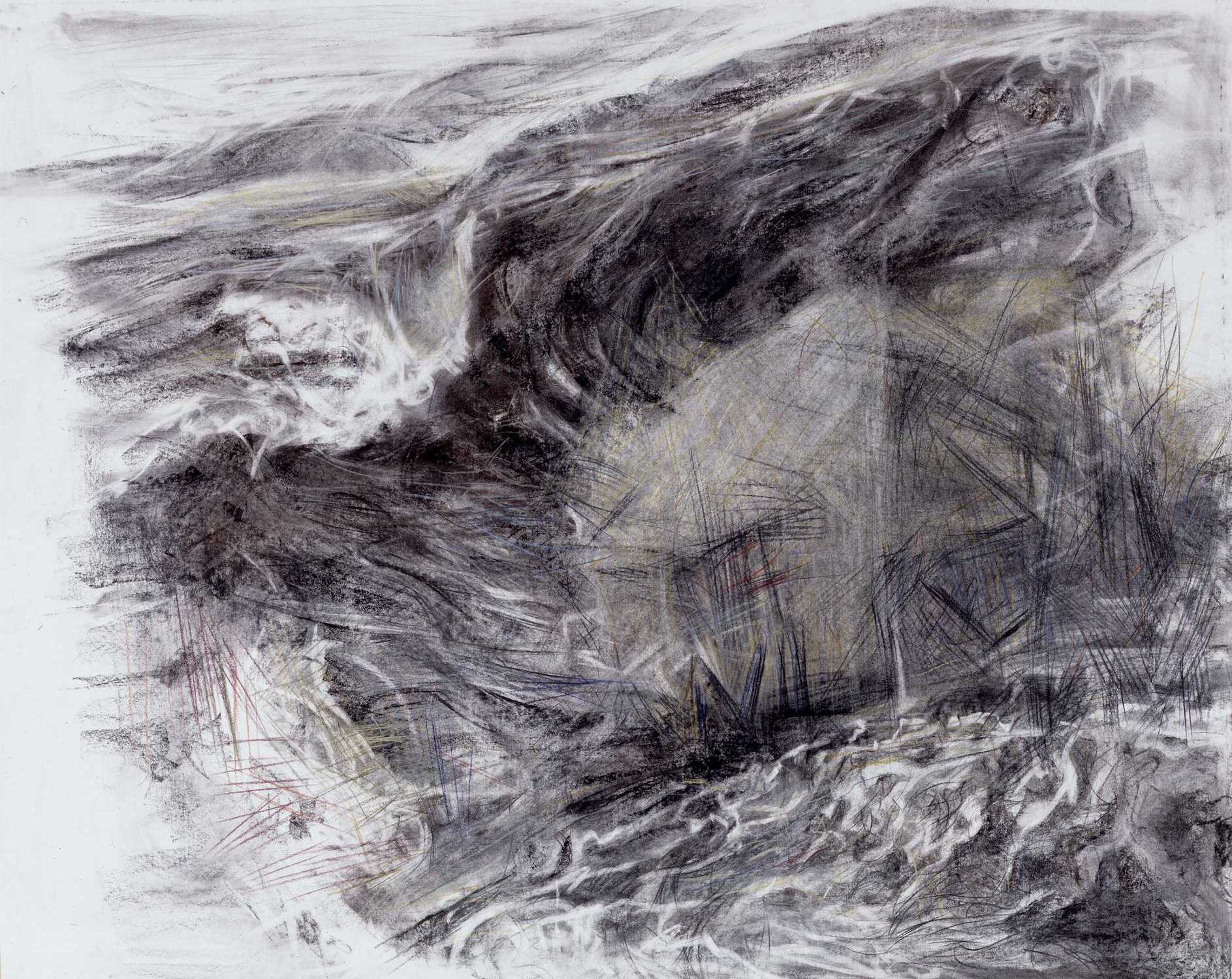Drawing
The drawing set me free to engage with the object spontaneously, the direct notation increases the concentration and the intuitive understanding of the structures. In my work on the city of Berlin, I mainly used it as a design technique, to give concrete form to the image idea. The drawing and its related techniques such as watercolor or ink on paper form a continuous component in my work as an independent means of expression. In the middle of thr 80s the historical theme of the Cityviews ATOMBUNKER KUDAMM KARREE and the „OHNE TITEL“ became continuing and transforming in a elimentary way.
Helgoland
In the subject -HELGOLAND- only the drawing is used as a stylistic device. The visit to the island of Helgoland led me to the conception of the pictures with the title – Helgoland -, which I developed against the background of the historical events and the impressions on site (during the 2nd World War the island of Helgoland was completely bunkered as a strategic base In 1947 it was almost completely blown up). This historical background of the island is decisive for the “nature observation”.
In the center of this work of „HELGOLAND“ are 8 segments (240/320 cm), charcoal drawings on paper.
